The Ducati Streetfighter V4 S has finally landed on U.S. shores. Is it as good as it looks?
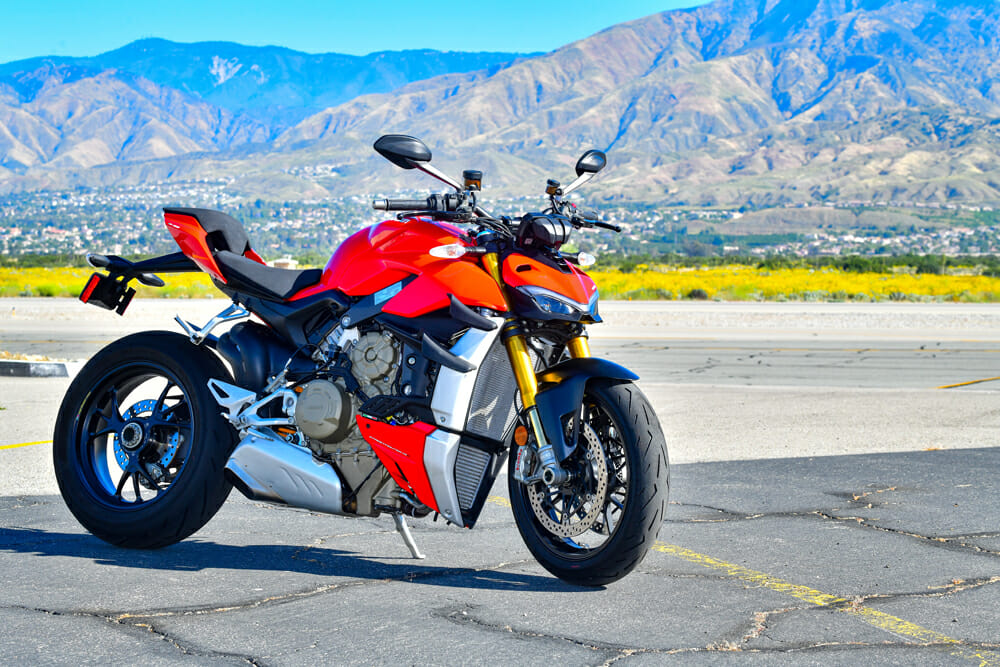
Photography by Kit Palmer
If you’re not into reading concise, in-depth road tests, I’ll save you the time.
The Ducati Streetfighter V4 S is one of the great motorcycles of our time. The thing is so fast, so comfortable, with such street presence, you should feel sorry for much (not all) of the competition. And if you don’t mind parting with $24K to have one in your garage, you really should.
However, if you want a little more thought put into the test, read on.
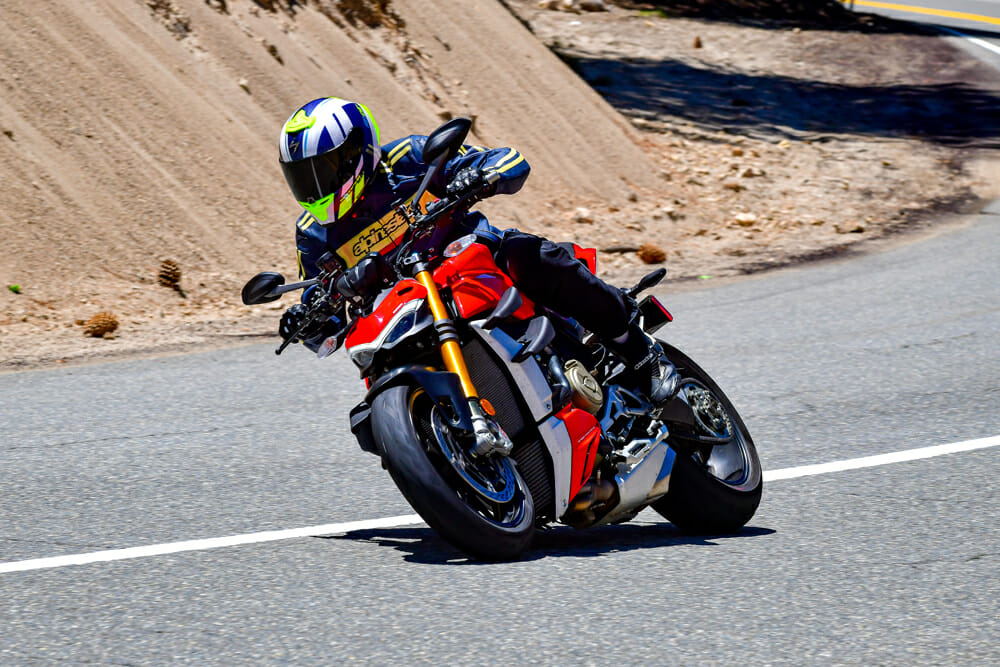
We’ve already had a pretty good year for new bike releases, especially if you—like me—are a naked-bike lover. At a glance, we’ve had the plainly moronic acceleration offered by the new supercharged Kawasaki Z H2; a revised and refreshed KTM 1290 Super Duke R; a facelift for the Kawasaki Z900, and a personal favorite in the sensational KTM 890 Duke R. Notice a pattern here?
The naked-bike segment needed a little red Italian love, and what is on offer from Borgo Panigale is absolutely more anticipated than the revision of the Panigale V4 S, on which it is based, and that we tested in the pouring rain in Bahrain at the beginning of the year.
The $23,995 Ducati Streetfighter V4 S is the upscale version of the $19,995 base-model Streetfighter and is essentially a Panigale V4 S stripped of its bodywork, with an extra wing added to each side, one-piece handlebar and a face modeled (seriously, it was) on Joaquin Phoenix’s portrayal of The Joker.
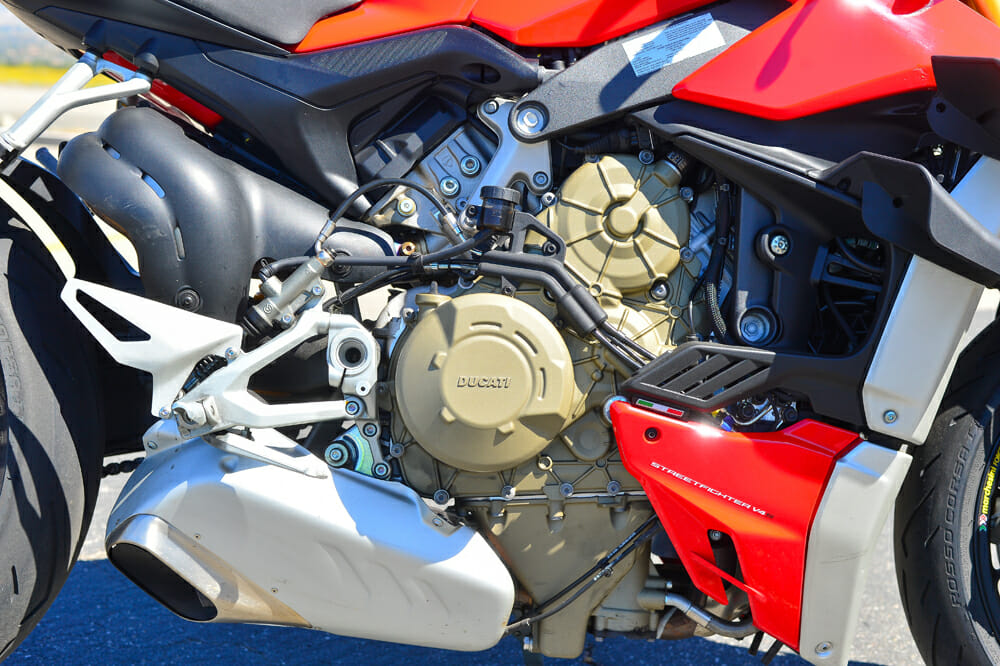
On hand is the 1103cc V4 Desmosedici Stradale V4 pumping out a claimed 208 horsepower for a package weighing a claimed 392 pounds (with a full tank of fuel you’ll be tipping the scales at 458 pounds). It’s not entirely the same power package as the Panigale, as Ducati has knocked a tooth off the countershaft sprocket for shorter gearing, and the ECU gets different engine mapping to suit the more sedate riding you’ll supposedly be doing on the Streetfighter over the Panigale.
You are festooned with a plethora of electronics in the Streetfighter suite, but if you’re used to what’s on the Panigale, nothing will be of great surprise. Bosch six-axis IMU, Ӧhlins Smart EC2 suspension, Ducati Traction Control, Wheelie Control, Slide Control, Launch Control, up and down Quickshifter, Cornering ABS, Engine Brake Control and—no cruise control, which, for a bike costing this much and designed for “real world” riding, is a major flaw.
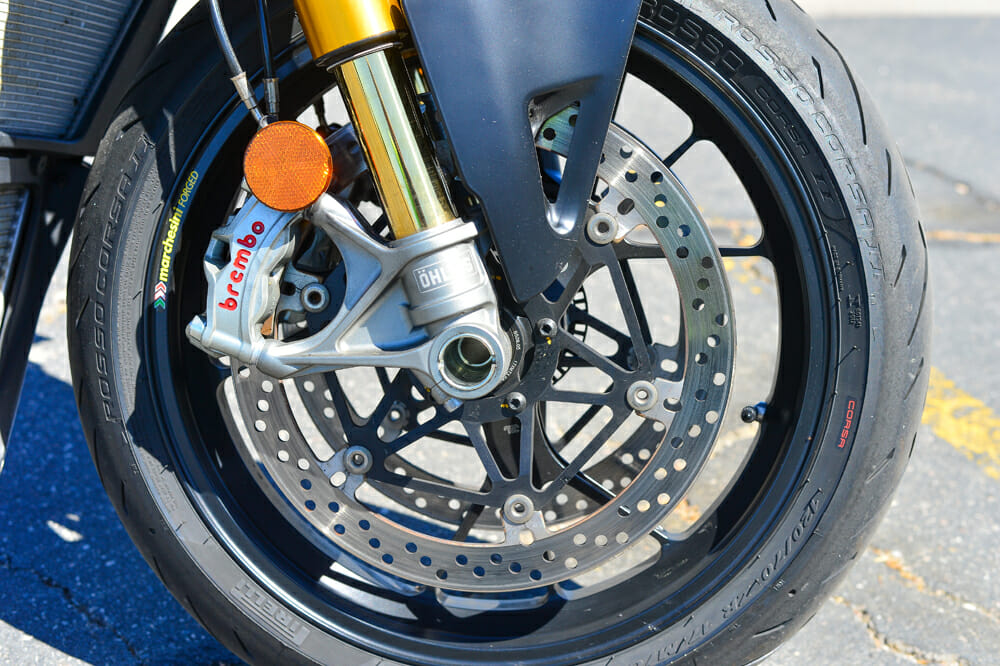
Regardless of that omission, the Streetfighter’s electronic suite is delightfully easy to use and navigate. Its layout is the same as the Panigale’s, but to understand and appreciate just what this bike can do on the electronics front will take several weeks of ownership, not a simple two-hour test ride. I often wonder just what else the Ducati engineers need to fit into an electronics suite before it becomes too much, as I struggle to think of what other performance benefits they could come up with.
As part of the Streetfighter V4 S’s $24K package, you’re graced with forged Marchesini aluminum wheels and the brilliant Ӧhlins Smart EC suspension working the 43mm NIX fork and TTX36 shock, which for me works better in Streetfighter mode on the street than it does on the Panigale on the track.
For such a plainly vicious motorcycle, the Streetfighter is docile enough to ride to the shops and never see fourth gear, as the Ӧhlins suspension offers—not an entirely magic carpet ride—but close to it.
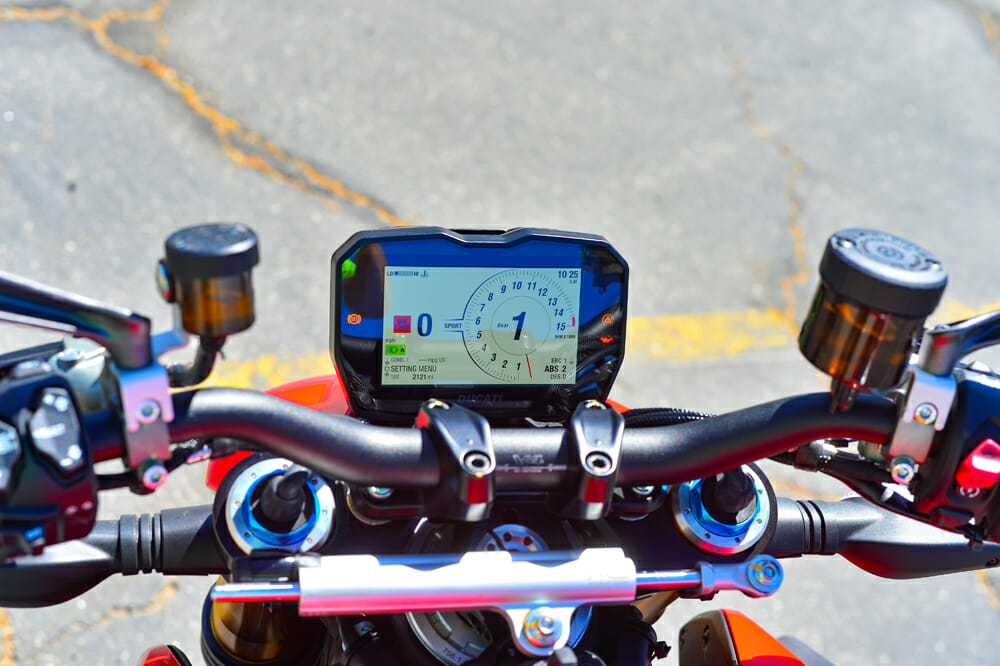
You’ve got “Fixed” and “Dynamic” modes within the Ӧhlins system, and the rider is capable of changing the suspension behavior for various situations. For example, if you want more balance under braking, dial in a stiffer braking setting. Want less squat on the rear for acceleration? Dial up the acceleration setting. This style of adjustment has been around since the first Panigale V4 S in 2018 and is an excellent way for riders who are not used to rebound, compression, or preload adjustments, to get their heads around how suspension works.
The Streetfighter V4 S comes with Street, Sport and Race ECU modes, and these, too, affect how the suspension behaves—not just the different responses you get at the twist grip.
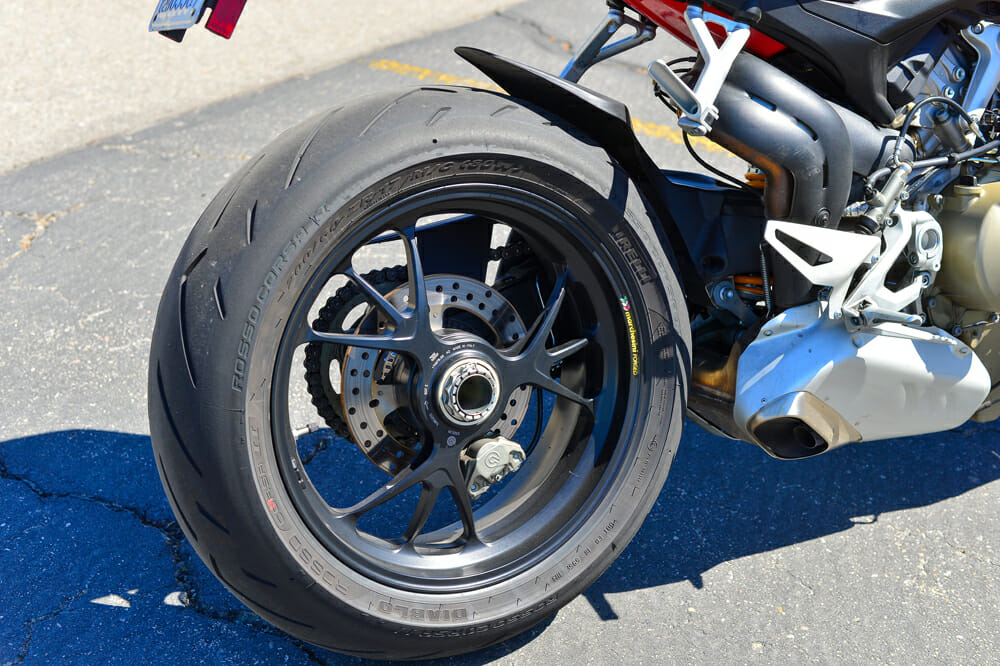
Regardless of how you adjust it, the suspension offers a beautifully plush ride. Simple cruising around is lovely, especially when you combine the suspension action with the comfort of the seat and the ample room you get from a rider triangle designed to accommodate a taller pilot in relative comfort.
The distance from the footpeg to the seat, and from the seat to the handlebar, means you can ride the Streetfighter for hours, so long as you don’t mind filling up every other hour (more on that later). It’s also nice for moving around on the chassis when things heat up in the corners, which they do very, very quickly on the Streetfighter.
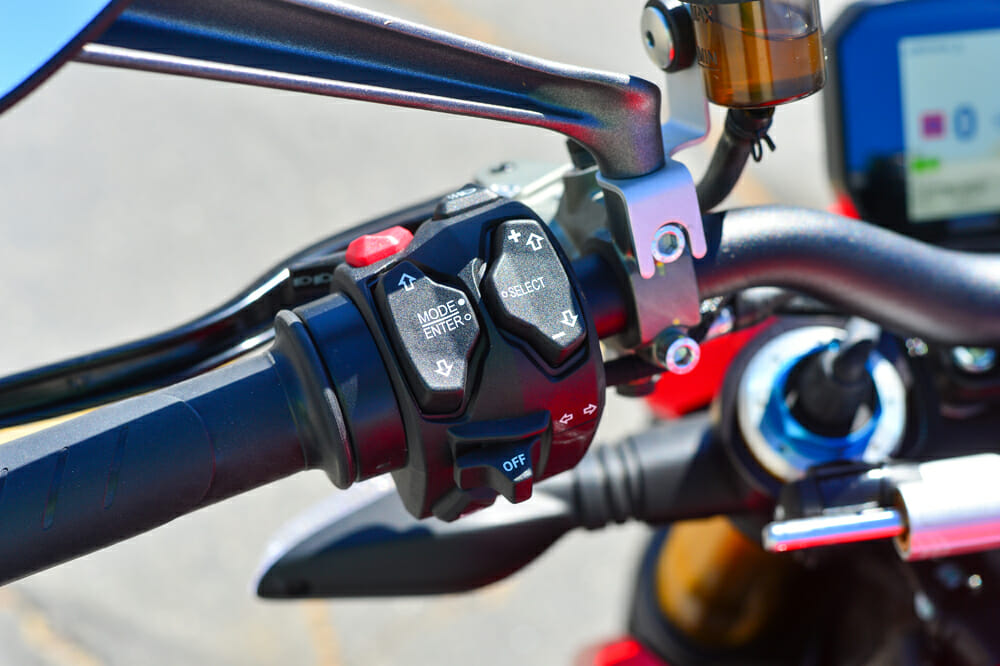
With that claimed 208 horsepower on tap, the Streetfighter is absolutely not a toy. This is easily the fastest naked bike I have ridden to date, not just in the way it accelerates (which is mind-numbingly quick), but how it simply devours corners, much like its clothed brother in the Panigale.
But whereas the Panigale has a fragile nervousness to it, the Streetfighter—at least at normal road speeds, and a little above, let’s be honest—is a much more poised proposition. Yes, the engine underneath you dictates your utmost attention as you hurl gears at it via the ultra-precise quickshifter, but the chassis throws waves of feedback to the rider thanks to the way the electronics meter the power delivery, the semi-active suspension, and the Brembo Stylema and radial master-cylinder.
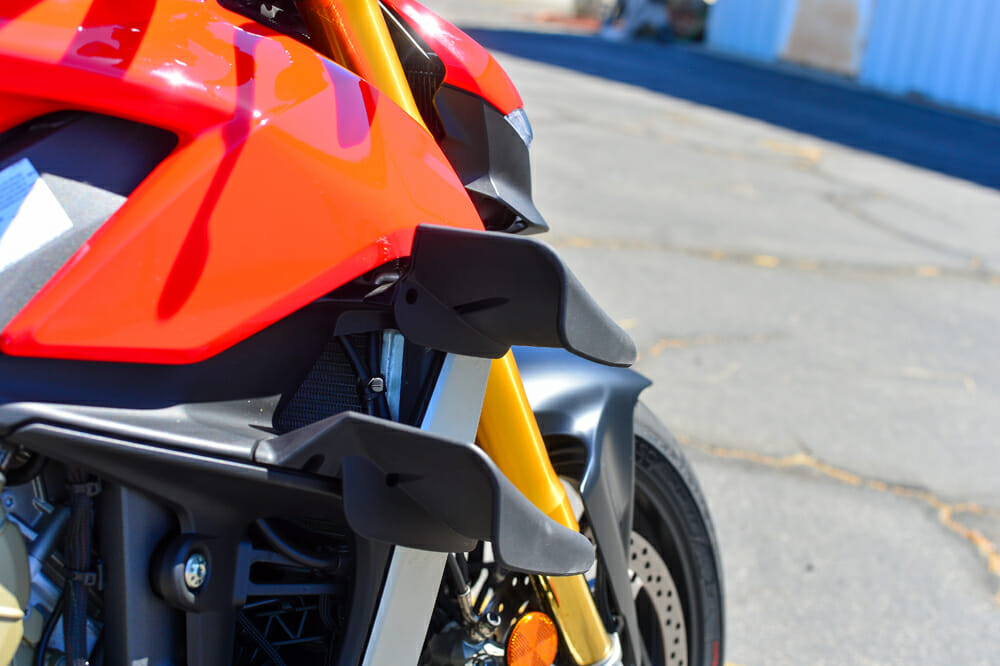
The braking power and feel are brilliant and very similar to that of the 890 Duke R. On that bike, the brakes are so good that they are almost too much for the chassis, whereas with the extra weight of the Streetfighter, they feel spot on.
Under brakes and during the initial stages of turning, the Streetfighter will follow the chosen line like a faithful student, and it doesn’t mind changing lines mid-corner if you screw it up. Under power is a similar experience, although trailing a rear brake doesn’t hurt when trying to lay down all that power in a swift fashion.
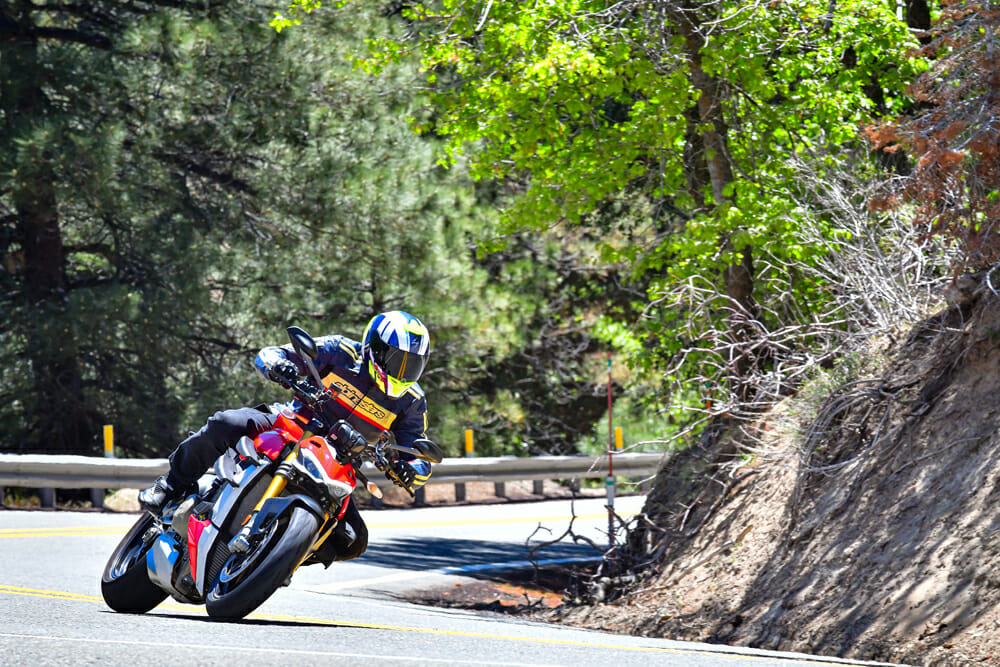
The electronics are adjustable enough that you can have the dog on a choker chain or let it run freely, but running freely will demand nothing but your sharpest focus. During my ride, I found Sport to be the ideal setting in terms of power delivery and suspension behavior, and I loved how the Streetfighter behaved when I ramped up the engine braking to its maximum level, pulling the chassis into the corner and allowing an extra level of security when braking nice and late for the corners around our photo location at Big Bear.
If you ride the Streetfighter like you stole it, be prepared to fill up a lot. Across our test, I got just under 100 miles (97.3) out of the 4.2-gallon tank with a few drops of fuel to spare to get me to the gas station before I had to push it. Fuel flows quick on the Streetfighter, but I didn’t get the chance to do a more sedate gas mileage test, so 23.3 mpg it is. And that is far from great when we’re talking a street bike. In fact, it’s in direct contrast to how much fun this animal of a motorcycle is to ride.

Hey, if you’re cool with $24K for a naked-bike, filling up for gas every 100 laugh-out-loud miles should be of absolutely no concern.
The Ducati Streetfighter V4 S is a monumental motorcycle that is a very worthy successor to the brutish Streetfighter S from a decade ago. The package is so refined, so much nicer to ride, yet so damn fast, it makes that earlier Streetfighter feel nothing short of a dinosaur.
But that’s the nature of development, right?
Like I said at the start of the article, if you don’t mind parting with $24K to have one in your garage, you really should. And even if you do mind parting with $24K, you probably should, too. CN
VIDEO | 2020 Ducati Streetfighter V4 S Review

2020 Ducati Streetfighter V4 S Specifications
| MSRP: | $23,995 |
| Engine: | Liquid-cooled, Desmosedici Stradale 90° V4, rearward-rotating crankshaft, 4 Desmodromically actuated valves per cylinder |
| Fueling: | EFI |
| Displacement: | 1103cc |
| Bore x stroke: | 81 x 53.3mm |
| Power (claimed): | 208 hp at 12,750 rpm |
| Torque (claimed): | 90.4 lb-ft at 11,500 pm |
| Electronics: | Three Riding Modes, Power Modes, Cornering ABS EVO, Ducati Traction Control (DTC) EVO 2, Ducati Wheelie Control (DWC) EVO, Ducati Slide Control (DSC), Engine Brake Control (EBC) EVO, auto tire calibration, Ducati Power Launch (DPL), Ducati Quick Shift (DQS) up/down EVO 2, Full LED lighting with Daytime Running Light (DRL), Ducati Electronic Suspension (DES) EVO with Ohlins suspension and steering damper, Quick adjustment buttons, Auto-off indicators |
| Transmission: | 6-speed |
| Clutch: | Wet multi-disc |
| Chassis: | Aluminum alloy “Front Frame” |
| Front suspension: | Öhlins NIX30 43 mm fully adjustable fork with TiN treatment. Electronic compression and rebound damping adjustment with Öhlins Smart EC 2.0 event-based mode |
| Rear suspension: | Fully adjustable Ӧhlins TTX36 unit. Electronic compression and rebound damping adjustment with Öhlins Smart EC 2.0 event-based mode. Aluminum single-sided swingarm |
| Front-wheel travel: | 4.7 in. |
| Rear-wheel travel: | 5.1 in. |
| Front brake: | Dual 330mm semi-floating discs, radially mounted Brembo Monobloc Stylema (M4.30) 4-piston calipers with Cornering ABS EVO |
| Rear brake: | 245mm disc, 2-piston caliper with Cornering ABS EVO Last generation digital unit with 5-inch TFT color display |
| Front tire: | Pirelli Diablo Rosso Corsa II 120/70 ZR17 in. |
| Rear tire: | Pirelli Diablo Rosso Corsa II 200/60 ZR17 in. |
| Seat height: | 33.3 in. |
| Wheelbase: | 58.6 in. |
| Rake: | 24.5° |
| Fuel capacity: | 4.2 gal. |
| Weight (Measured): | 458 lbs. |
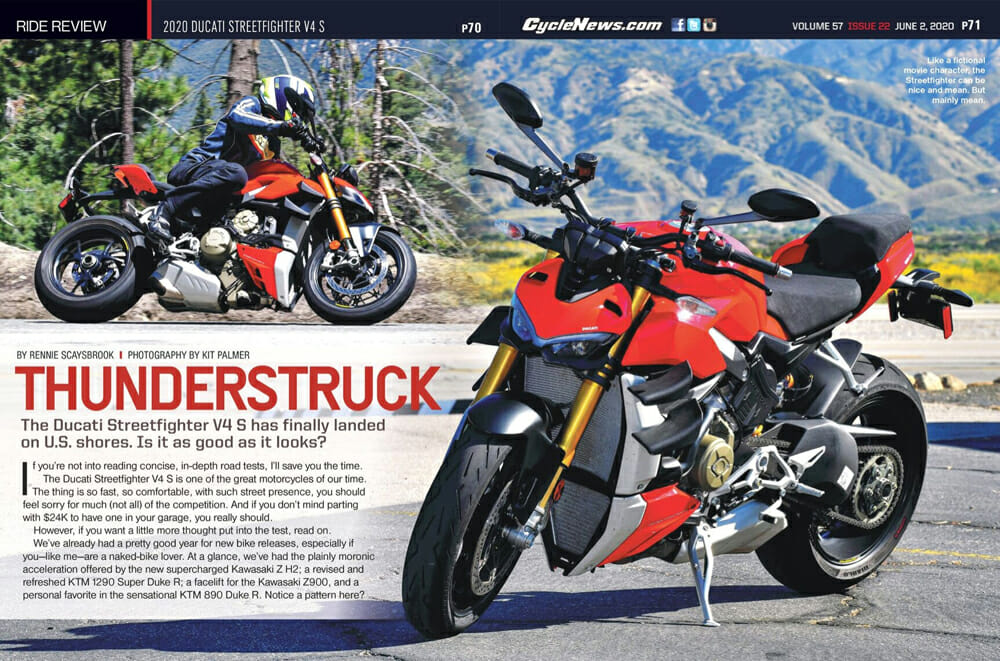
Click here to read the 2020 Ducati Streetfighter V4 S Review in the Cycle News Digital Edition Magazine.
Click here for the latest Cycle News Sportbike motorcycle reviews and news.
Click here for the latest Cycle News Standard motorcycle reviews and news.
Click here for more Ducati motorcycle reviews and news.
